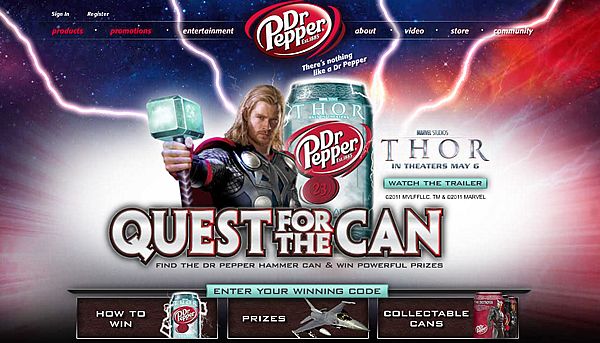Konkursy i Promocje: Boosting Engagement and Sales
In today’s highly competitive marketplace, businesses are constantly looking for innovative ways to engage their audience and drive sales. One effective method that has gained traction is the organization of contests and promotions. According to recent studies, around 70% of consumers are more likely to purchase a product or service when they see it being promoted through fascinating contests. This article delves into the various aspects of contests and promotions, highlighting their importance, types, and strategies for success.
Readers can expect to gain insights into how contests can leverage your marketing efforts, understand the psychology behind participatory marketing, and learn tips and tricks for executing successful promotions. We will also cover common pitfalls to avoid and the significance of measuring success after your promotions.

Understanding Contests and Promotions
Contests and promotions are powerful marketing tools that draw consumer attention and participation. While both involve incentivizing consumers, they differ significantly in structure and intent. Contests typically require participants to earn points or demonstrate skills, whereas promotions are often more straightforward, such as discounts or giveaways.
The Importance of Contests
Contests can create a buzz around your brand while encouraging interaction and engagement. Here are some noteworthy benefits:
- Brand Awareness: A well-planned contest can enhance your online visibility and reach.
- Customer Engagement: It encourages customers to interact with your brand actively.
- Data Collection: Contests provide valuable data about participant preferences, which can inform future marketing strategies.
The Role of Promotions
Promotions play a critical role in influencing purchase decisions. Here’s why they are essential:
- Boost Sales: Promotions can lead to immediate increases in sales by appealing to impulse buyers.
- Customer Retention: Well-structured promotional strategies can encourage repeat purchases.
- Competitive Edge: Promotions can help your business stand out among competitors.
Types of Contests and Promotions
Various formats exist for contests and promotions, each serving different marketing goals.
Entry Contests
These contests require participants to submit entries based on specific criteria, whether it be a photo, a video, or a story. For example, a theme-based photo contest allows users to submit their best photos related to your brand theme.
Skill-Based Contests
Skill-based contests could involve quizzes, puzzles, or challenges where participants need to showcase their expertise or creativity. A skill-based contest often has a more engaged audience because they must actively participate.
Random Draws
This type of promotion simply requires participants to sign up for a chance to win prizes. It’s straightforward and can quickly draw in large numbers of participants without significant effort on their part.
Discount Promotions
One of the most common promotional strategies is offering discounts. This can be effective when launching new products or during sales events. For example, Party City offers various seasonal discounts that entice customers to make purchases.
Seasonal Promotions
Running promotions tied to holidays or events can effectively boost sales during specific times of year. Think Halloween specials or Spring Sale events that correlate with consumer buying trends.
How to Create an Engaging Contest or Promotion
Designing a contest or promotion requires careful planning. Here are some essential steps to follow:
Define Your Objectives
First, you must clarify what you aim to achieve. Is it brand awareness, lead generation, or sales boost? Clear objectives will guide your execution strategy.
Set Clear Rules
Establish well-defined and transparent rules for participation. This includes eligibility criteria, start and end dates, and how winners will be selected.
Choose the Right Platforms
Social media channels such as Instagram, Facebook, and Twitter are popular for hosting contests and promotions. Choose platforms that align with your target audience.
Promote Your Contest
Utilize your email list, social media, and your website to promote your contest. Running ads can help reach a wider audience, while influencers can expand your reach even further.
Measuring Success: Post-Contest Analysis
Once your contest or promotion has concluded, it’s crucial to evaluate its success. Here are key performance indicators (KPIs) to consider:
Engagement Metrics
Analyze likes, shares, comments, and participation rates to understand how engaging your contest was. For instance, if your promotional campaign was featured on Party City, metrics from your campaign can provide valuable insights.
Conversion Rates
Measuring how many participants converted to customers is essential for understanding the financial success of your promotion.
Feedback Collection
Encouraging feedback from participants can help improve future contests and promotions. Surveys or direct messages can provide invaluable insights for enhancements.
Avoiding Common Pitfalls
When running contests and promotions, certain pitfalls can derail your success. Here are some to watch out for:
- Lack of Clarity: Ensure that contest rules are clear to avoid confusion.
- Ignoring Follow-Up: Engage with participants even after the contest concludes to build long-term relationships.
- Overcomplicating Participation: Make it simple for participants to enter. Complexity can deter participation.
Conclusion
Contests and promotions are powerful tools that can significantly enhance brand awareness, engagement, and sales when executed correctly. By leveraging the insights outlined in this article, businesses can create effective strategies that not only attract participants but also convert them into loyal customers. Remember to continually measure and analyze results to refine your approach continually, ensuring future contests and promotions yield even greater success.
In an era where customer engagement is crucial, meticulously crafted contests and promotions can set your brand apart and foster lasting connections with your audience.
